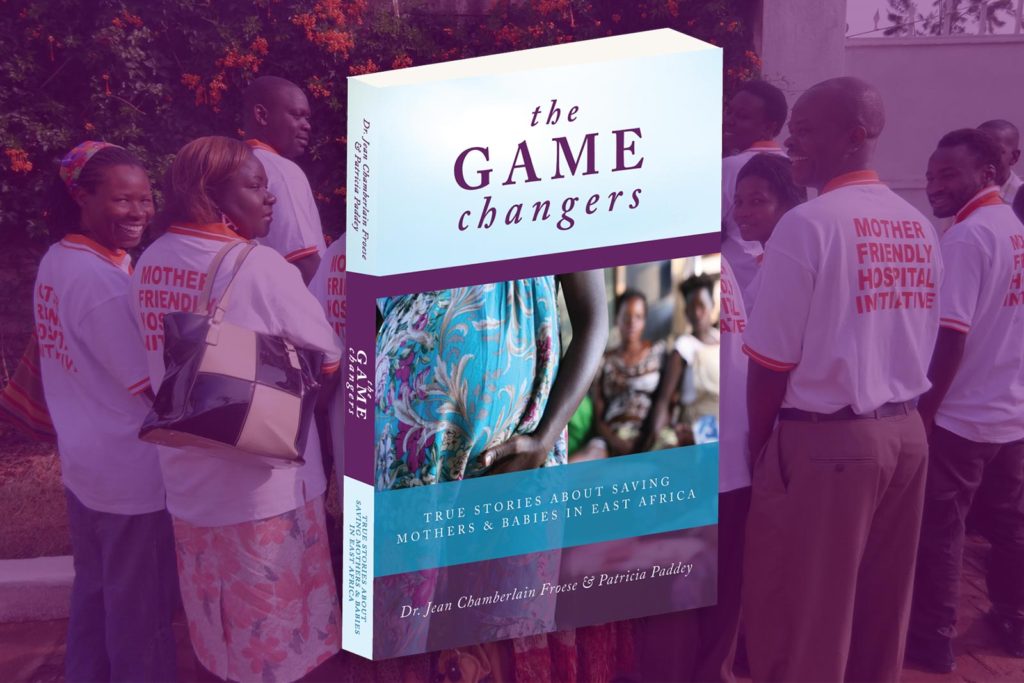They are the visionaries, bold, bright, brash and creative. They innovate, think outside the box, and forever alter the way things are done. Game changers recognize the truth of the adage that, “If you do what you’ve always done, you’ll get what you’ve always gotten.” Game changers believe—they know—deep down in the very deepest, downest parts of their souls that they can make a difference. And with their motivation and drive, they do make a difference.
This is a book of stories about the differences game changers are making in a part of the world where the game desperately needs changing.
“Uganda is a fairy tale,” said another game changer who was one of the giants of the 20th century, British statesman Sir Winston Churchill. He likened the country itself to a story, the kind of story everyone wants to read. “You climb up … and at the end there is a wonderful new world.”
“The pearl of Africa,” he called the landlocked East African nation back in 1907 for the beauty of its vegetation, breath-taking scenery, tropical climate, and “profusion of brilliant life—bird, insect, reptile, beast.” But that was more than a hundred years ago. And pearls can lose their lustre over time.
Tragically, it is in the realm of life itself that the country—indeed the entire region of sub-Saharan Africa—is struggling. Of course, today’s Uganda continues to display the “profusion” of which Churchill raved. Everywhere you look in this country, life teems—from the minutest insects floating in clouds on moist air, to the huge birds that beat their wings making helicopter sounds of whupp whupp overhead; from the dazzling variety of fragrant and multihued blossoms that grow with abandon, to the chickens, goats and long-horned cows that graze by the sides of every roadway.
Unfortunately, human life is a different story.
There are children everywhere, but abundance of young people is not necessarily a sign of a healthy population. Life expectancy at birth is a mere 57 years in Uganda, decades shorter than in more developed countries. Scientists consider Uganda to be an HIV hot spot; the majority of the globe’s HIV infections are in sub-Saharan Africa where the AIDSsituation is most dire. One-and-a-half million Ugandan citizens live with HIV and AIDS—and the disease is still on the increase, particularly among young people.
The health of women and their babies is especially at risk. The average woman in Uganda births more than six children during her lifetime. (This cultural norm is influenced by a complex maze of social factors, including traditional values on large families as a source of pride, low education levels, men’s role as the primary decision-makers, difficulty in accessing means of family planning, and misinformation about contraception’s rumoured negative affects on women’s health. This results in fewer than a quarter of all women using any form of modern contraception.)
So although in sub-Saharan Africa, having a baby is one of the riskiest things many women will do, childbearing begins early and is nearly universal. One-third of women aged 20 – 24 gave birth by the age of 18. And almost one fourth of teenage girls between 15 and 19 years old are already mothers, or are pregnant with their first child.
All that pregnancy and childbirth in a country where the total healthcare spending translates into only about US$146 per capita means women and babies die.
They die in shocking numbers. Some 6,000 Ugandan women lose their lives to complications of pregnancy and childbirth every year. (That is more than 200 times the number of women who die from the same sorts of complications in Canada—a country with roughly the same size population.) One in four women who dies during childbirth simply bleeds to death—something that could be prevented by medication that costs less than a dollar. Others die in excruciating pain caused by massive infections, contracted due to unhygienic conditions or prolonged obstructed labour.
At the same time, every year tens of thousands of babies are stillborn, while an equivalent number die within their first month. For those babies who survive past one month, one in every nineteen won’t make it to his or her first birthday. And before he or she can turn five, one in every eleven will be gone.
Mothers are the ultimate game changers in the lives of their children; the death of one mother often leaves a family of orphans whose prospects—without a mother to care for them—become infinitely worse. And for every woman who dies, many more suffer disabilities from their pregnancies and deliveries, causing a multitude of health and socio-economic problems.

